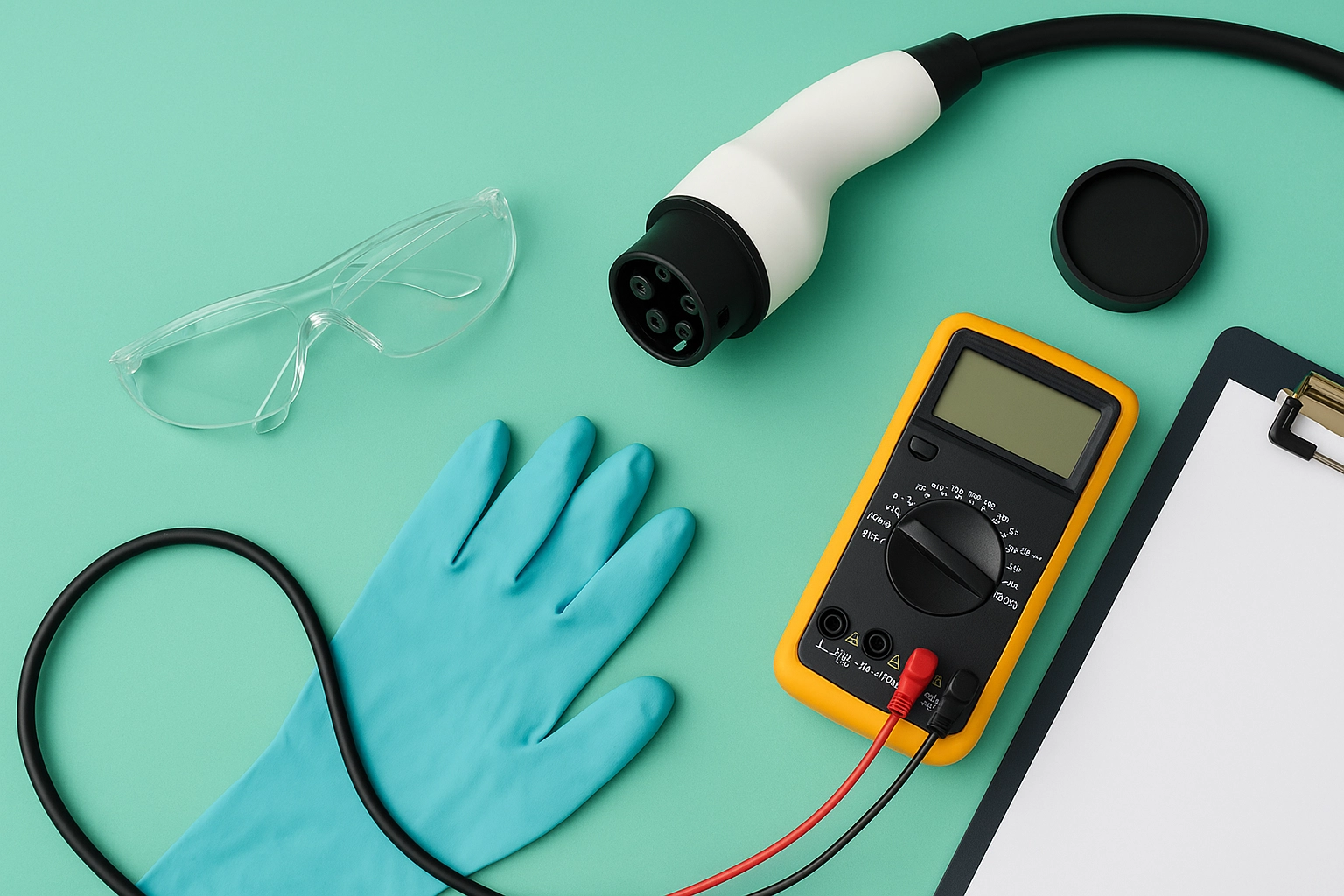SAE J2953 Wireless Power Transfer Interoperability Test
The SAE J2953 standard defines a method to verify the interoperability of wireless power transfer (WPT) systems. This test ensures that EV charging equipment can communicate and operate with other compliant WPT devices effectively, thereby enhancing the seamless integration within electric vehicle (EV) infrastructure.
Wireless power transfer is gaining significant traction in the automotive sector due to its potential for reducing complexity, improving safety, and enhancing user convenience. However, interoperability remains a critical concern that must be addressed to ensure widespread adoption and usability of WPT systems across different manufacturers' products.
The SAE J2953 test protocol involves simulating real-world conditions under which EV charging equipment interacts with the WPT system. This includes verifying communication protocols, power delivery capabilities, and safety features. The testing process is designed to be rigorous yet flexible enough to accommodate various WPT technologies while ensuring they meet stringent interoperability standards.
One of the key aspects of this test is its ability to simulate different environments and scenarios that an EV might encounter during charging. This includes variations in signal strength, environmental factors like temperature and humidity, and variations in power demand based on vehicle type and battery capacity. By replicating these conditions accurately, the SAE J2953 test provides a comprehensive assessment of how well WPT systems perform under diverse circumstances.
Another crucial element of this testing methodology is its focus on ensuring robust communication between the charging equipment and the WPT system. This involves verifying that both parties can exchange necessary information securely and efficiently, which is essential for maintaining safety standards while facilitating fast and reliable charging processes. The test also checks whether there are any discrepancies or errors in data transmission that could affect performance.
SAE J2953 emphasizes the importance of safety as a primary objective during testing. This includes evaluating how well the system detects potential hazards such as overheating, overcurrent conditions, and other risks associated with improper power transfer. By doing so, it helps guarantee that all participants adhere strictly to safety regulations set forth by relevant organizations like OSHA or UL.
The results of this test are invaluable for quality managers looking to ensure their products meet high standards before entering the market. Compliance officers can rely on these findings when negotiating contracts with suppliers or assessing compliance status against industry requirements. R&D engineers benefit greatly from understanding how different components interact within a WPT system during development stages, allowing them to make necessary adjustments early in the process.
For procurement teams, having reliable information about which suppliers offer compliant solutions is crucial for sourcing quality parts and materials that will integrate seamlessly into existing systems. Additionally, this type of testing supports continuous improvement initiatives aimed at enhancing overall product performance over time.
Why It Matters
The SAE J2953 Wireless Power Transfer Interoperability Test is crucial because it ensures that all EV charging equipment adheres to the same standards, making it easier for consumers to use WPT systems regardless of brand. This interoperability fosters a more unified market where users can expect consistent performance and reliability across different products.
By promoting compatibility among various manufacturers' offerings, this test encourages innovation without compromising safety or efficiency. It allows companies to focus on developing better technologies rather than worrying about whether their devices will work correctly with others. This approach ultimately leads to faster adoption rates for new EV charging solutions and supports the broader goal of reducing carbon emissions by increasing the number of electric vehicles on the road.
Moreover, this test helps establish trust between consumers and businesses involved in manufacturing or selling WPT systems. When people know that all products meet stringent interoperability criteria, they are more likely to choose those brands, leading to increased sales and market penetration for compliant companies. This positive feedback loop encourages further investment into research and development efforts aimed at improving existing technologies while exploring new possibilities.
Applied Standards
- SAE J2953 – Wireless Power Transfer Interoperability Test Methodology
The SAE J2953 standard provides detailed instructions on how to conduct the interoperability test for wireless power transfer systems. It specifies the necessary equipment, setup procedures, test conditions, and evaluation criteria used during testing.
Environmental and Sustainability Contributions
- Emissions Reduction: Ensuring interoperable WPT systems contributes to reducing emissions by promoting the widespread adoption of electric vehicles. This helps decrease reliance on fossil fuels, which are major sources of greenhouse gases.
- Resource Efficiency: The standard supports more efficient resource use through better integration and optimization of charging infrastructure, potentially leading to reduced energy consumption in transportation sectors.





